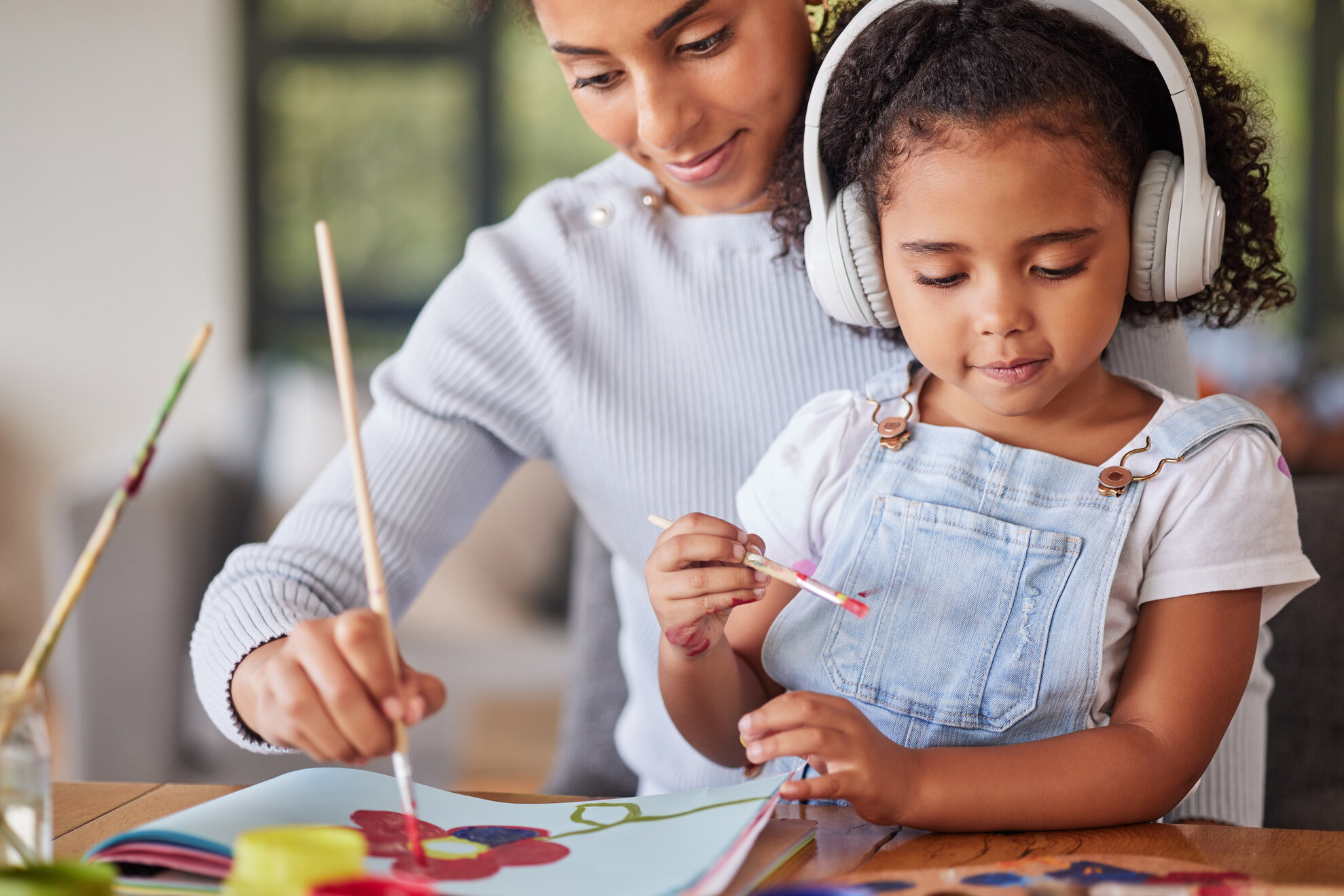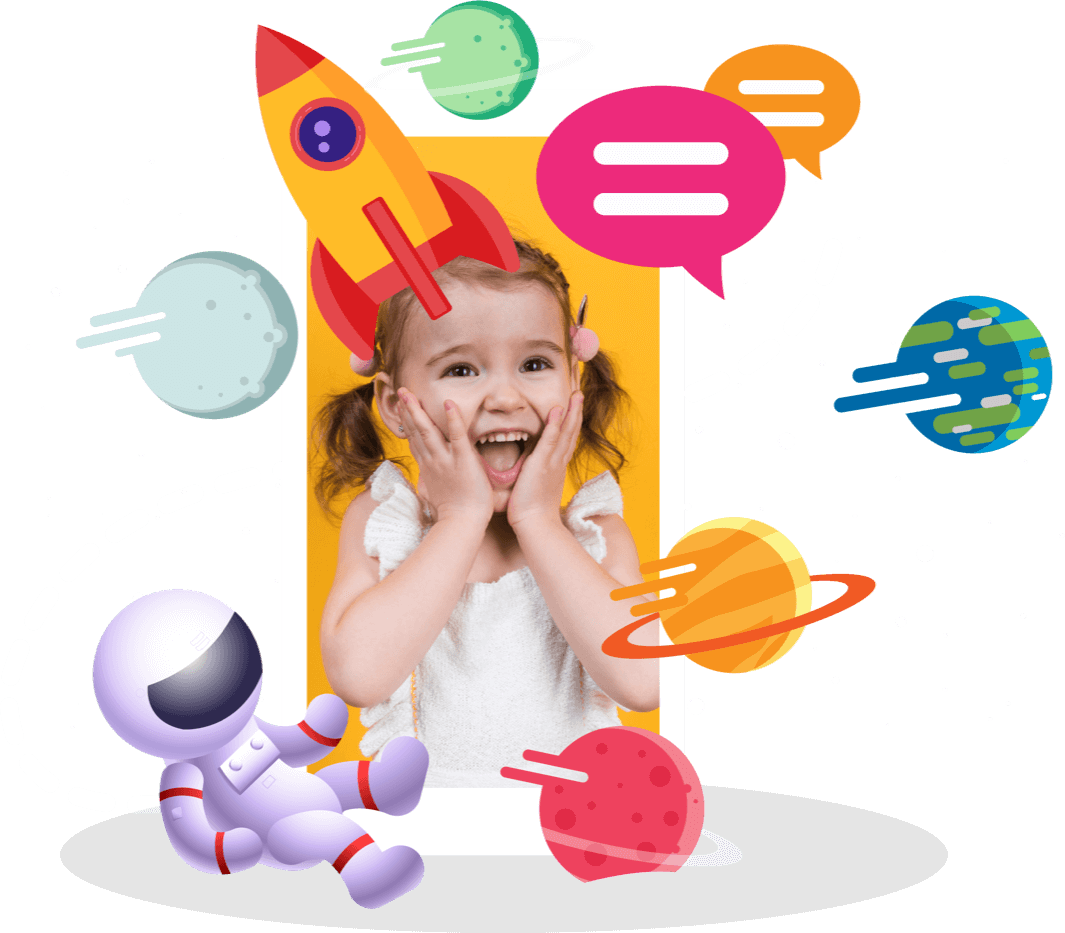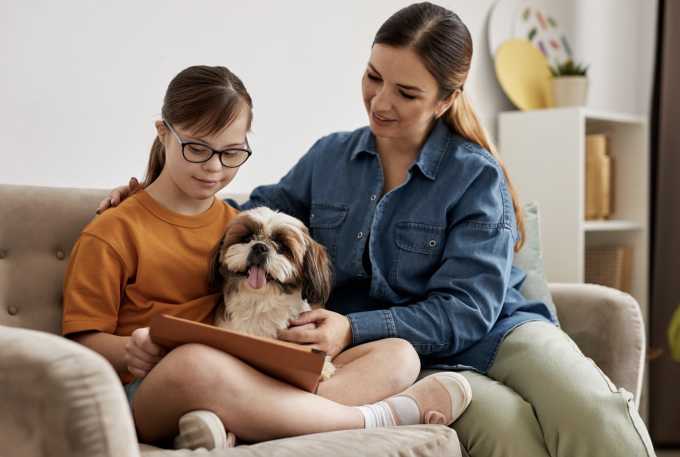Effective communication is critical for building good relationships and providing the best care possible for special needs children. Communication, on the other hand, may be very difficult for autistic children. In this blog post, we will explore a few simple yet effective ways for improving communication with autistic kids.
We will look at many techniques for greatly improving children’s communication skills, such as employing simple, fundamental language and offering structure and consistency. We’ll also discuss the need of working with specialists such as behavior therapists, occupational therapists, and speech therapists who can provide kids with specific assistance and guidance as they develop their social and linguistic abilities. This blog post will provide incisive analysis and practical recommendations to help you communicate more effectively with children on the autism spectrum, whether you are a parent, caregiver, or educator.
Come along with 200k+ families!
Explore the endless possibilities of learning!
Download for Free.
Understanding the communication challenges of autism
It is important for parents, carers, and educators to have an understanding of the communication challenges that are linked with an ASD. Kids that fall somewhere on the autism spectrum may have difficulties with social communication, as well as verbal and nonverbal modes of communication. So people may have trouble starting and maintaining conversations, interpreting social cues, and expressing themselves appropriately. These issues may make it challenging for kids to interact with others and can have a substantial impact on the children’s day-to-day lives.
Kids with autism struggle with speaking often, which is one of the most significant communication barriers and hallmark symptoms of the disorder. They could have delayed language development or difficulty using language in a functional way, or they may not speak at all. They might also find it difficult to communicate nonverbally, such as through eye contact, facial expressions, and body language. The ability to recognize social cues and take part in social interactions may also be difficult for kids on the autistic spectrum. These communication difficulties can make it difficult for people with autism to connect with others, which can cause isolation and frustration in their daily life.
How does autism impact communication?

Building healthy relationships and giving children and adults on the autism spectrum the greatest assistance possible may need an understanding of how ASD impacts communication. It’s helpful to recognize that each person with ASD is distinctive and faces communication difficulties in their own way.
Verbal communication may be difficult for some people with autism. They could struggle to initiate or maintain discussions, or their language development might be delayed. They could also struggle to communicate nonverbally, such as through eye contact, facial gestures, or body language. Some people with autism may also have trouble reading social cues or participating in social interactions.
How difficult is it for them to communicate?
It’s crucial to remember that these communication difficulties may make it difficult for people with autism to interact with others. Unfortunately, this difficulty may lead to isolation and frustration for these people. However, it is possible to improve communication and social skills of autistic people with the help of specialized assistance and direction offered by experts like speech therapists, occupational therapists, and behavior therapists. Parents, caregivers, and educators of these individuals should be ready to understand the distinctive communication style of people with autism and help them along the way.
Some people with ASD may not speak. In fact, an estimated %40 of kids with autism are non-verbal. This means they can’t or won’t communicate through spoken language. These people may use other forms of communication including sign language, picture-based systems, or assistive technology. In order to express themselves and interact with others, non-verbal people with autism may benefit greatly from these techniques.
Come along with 200k+ families!
Let's communicate better!
Download for Free.
Another crucial factor to take into account is that different contexts and settings could create various different communication struggles for people with autism. An autistic person, for instance, could find it difficult to communicate with others in a loud environment, but they might do well in a more predictable one.
All things considered, it’s critical to remember that autism is a spectrum condition, which means that the communication difficulties a person with ASD has might vary substantially. Working with experts, being aware of an autistic person’s particular communication style, and being patient and adaptable when giving advice and assistance are all crucial. People with autism may hone their communication skills and strengthen their interpersonal connections with the correct approach and assistance.
Creating a supportive communication environment
Communication plays a crucial role in a child’s overall growth and development, as it allows them to express their thoughts, emotions, and needs effectively. However, for children with ASD, communication can be especially challenging. These kids may experience difficulties with verbal and nonverbal communication, social interaction, and may also struggle with understanding body language and tone of voice.
Despite these challenges, with the right support, kids with ASD can still successfully communicate. Providing them with a safe and nurturing environment can help them feel more comfortable and confident in expressing themselves. Using visual aids such as sign language, picture cards, and other forms of alternative communication can also help them to better convey their messages. Additionally, accommodating their sensory sensitivities, such as reducing background noise and providing them with opportunities to touch and manipulate objects, can also greatly improve their communication skills.
It is important to note that every child with ASD is unique and may have different communication needs and preferences. Working closely with their therapist, educators, and caregivers to identify their strengths and weaknesses and tailor their communication support accordingly can lead to better outcomes for the child.
By providing the right support and accommodations, children with autism can successfully communicate their needs, thoughts, and feelings, and lead a fulfilling life.
Creating a safe and comfortable environment

It is crucial to help children with autism in the development of their communication skills by providing an atmosphere that is safe and comfortable for them. This might include reducing the number of things that could potentially distract them, developing a schedule that is consistent, and making sure they are safe physically. Autistic children may feel more at ease and ready to speak or participate in speech activities when they are in an atmosphere that is both peaceful and regulated. Establishing a positive relationship with your kid and cultivating trust between the two of you can further increase the communication they make.
Using visual aids and other tools to support communication
Children with autism may benefit tremendously from the use of various visual aids and tools in order to enhance their communication. Utilizing graphic cards, sign language, or visual timetables might all fall under this category. Children with autism may benefit from the use of visual aids since it makes it easier for them to grasp and process information, which ultimately leads to improved communication. In addition, educating youngsters about different social circumstances and preparing them to communicate in various settings may be facilitated by the use of tools such as social storytelling.
Come along with 200k+ families!
Explore the endless possibilities of learning!
Download for Free.
Being aware of sensory sensitivities and how to accommodate them
A significant number of children with ASD suffer from sensory sensitivities, which might hinder their capacity for communication. When it comes to facilitating communication, simply being aware of these sensitivity issues and making an effort to accommodate them may make a world of difference. This may include avoiding specific textures or odors, wearing headphones to block out sounds, altering the levels of illumination, or a combination of these things. Making accommodations for children with autism who have sensory sensitivities can help these youngsters feel more at ease and ready to engage in communication.

In conclusion, facilitating communication for children who have autism necessitates a technique that utilizes several facets and considers the unique requirements and difficulties presented by each kid. It is feasible to build a communication setting that is supportive of children with autism by first providing a safe and secure atmosphere, then boosting communication using visual aids and tools, and finally making accommodations for children’s sensitivity to sensory input. These youngsters are capable, with the correct approach, of developing the communication skills that are necessary for them to flourish.
Communication strategies for interacting with people with autism

Communication is such a crucial component of day-to-day life. However, when interacting with autistic people, its value shoots up to an even higher degree. ASD is defined by a spectrum of symptoms, one of which is having trouble processing and production of language, as well as a possible distinctive communication style. Autism can also be characterized by a distinct communication style. If certain communication skills are learned, however, it is possible to improve conversations and develop meaningful connections with people with autism. Here, we will discuss a number of effective communication strategies that should be taken into consideration while talking with those who have ASD. The use of simple language, patience, the application of nonverbal signs and gestures, and the formulation of open-ended inquiries are some of the tactics that fall under this category.
Using simple language and avoiding jargon
When speaking with autistic people, it is essential to use language that is uncomplicated and plain, and to steer clear of jargon and other phrases that might make their understanding unclear. Because people with ASD may have difficulty comprehending abstract ideas or metaphorical language, it is critical to express information in a manner that is both direct and concrete. It is also good to repeat any crucial information or instructions several times, and to give them the opportunity to ask questions and get clarification if they require it.
Being patient and giving the person time to process information
Communicating with those who are on the autism spectrum requires patience and empathy. There’s a chance these people require extra time to read and digest material before responding to questions. The tension and anxiety that results from being rushed or interrupted can significantly hinder their ability to communicate.
Therefore, it is crucial to provide them with adequate time to absorb and react to new information. This demonstrates that you care about what they have to say, which goes a long way toward fostering trust and open lines of communication. It may also be quite useful in developing a feeling of stability and regularity to provide them with a visual timetable or pattern. This might make them feel more at ease and boost their communication skills.

People with ASD can benefit greatly from the use of visual aids like timetables, diagrams, and pictures. Their capacity to reply and interact with you will substantially improve if the information you provide is clear, succinct, and easy to grasp thanks to the use of these tools.
In conclusion, a more pleasant and inclusive environment may be created by being patient with those on the autism spectrum and allowing them the time they need to digest information. You may make everyone’s lives easier and the conversation go more smoothly if you use visual aids and tools.
Using nonverbal cues and gestures to help convey meaning
Recognize that persons with autism may have problems processing information and responding appropriately to verbal communication. Nonverbal cues and body language might be useful in some situations.
It’s possible that nonverbal cues like facial expressions and body language more accurately convey one’s state of mind and motivations than words alone. In some cases, this might even improve the connection between the sender and the recipient. The listener may better understand the message if you point out specific things or locations.
As a means of enhancing communication, sketches and diagrams are useful tools. By employing these methods, confusion over the subject matter can be dispelled. They also aid autistic persons in making connections between seemingly disparate ideas.
Come along with 200k+ families!
Let's communicate better!
Download for Free.
Keep in mind that there are many various ways to communicate and that one person’s preferred method may not work for you. Although the use of gestures, nonverbal cues, and visual aids can facilitate communication, adaptations may be necessary to meet the needs of the individual.
Finally, autistic people are able to communicate better when they use gestures, nonverbal cues, and visual assistance. Take into account their unique processing and communication styles to deepen your connection with them and ensure that your message gets across.
Asking open-ended questions rather than yes or no questions
It is excellent practice when communicating with autistic persons to ask them questions that urge them to elaborate rather than simply asking them yes or no questions. This is owing to the fact that straightforward inquiries with yes-or-no answers do not always allow for a comprehensive investigation of a matter. By asking open-ended questions, one might achieve a greater level of knowledge of the viewpoints and perspectives held by the other person. In addition, it is good to keep the number of questions you ask at one time to a minimum in order to avoid overwhelming the other person and making it more difficult to interact with them.
How to communicate with autistic children
Having meaningful conversations with children who have autism may be a trying but ultimately rewarding experience. It is of the utmost importance to recognize that every kid diagnosed with autism is an individual and may have distinctive approaches to communicating as well as specific requirements. On the other hand, there are some general guidelines that might assist to make communicating with autistic children easier.
One of the most important aspects of effective communication with autistic children is to use language that is straightforward. Instead of using technical phrases or jargon, try utilizing language that is simple and obvious so that your message isn’t lost in translation. Be patient with the youngster and allow them time to comprehend the information given to them. This is another crucial component. Kids with autism may require more time to comprehend what is being communicated to them; therefore, it is essential to refrain from pressuring them and provide them with the necessary amount of time.
Support your statements with appropriate gestures and other non-verbal clues. To further convey your intended message, consider employing pointing to items or directional motions with your hands. Talking to autistic people can help them have a chance to express themselves. It is feasible to establish a productive line of contact with autistic children if one is patient, uses basic language, and makes use of nonverbal clues and gestures.
How to communicate with autistic adults?

Remember that every adult with autism is unique in their own way and may have specific communication requirements. Some suggestions to improve communication are as follows.
Use clear and direct language
Speak clearly, and use basic, plain language to avoid misunderstandings. Don’t assume that people will understand your jokes, sarcasm, or other forms of figurative language.
Give them time to process information
Adults with autism may require more time than typical to comprehend new information before responding to it. Avoid interrupting them and give them room to formulate their thoughts.
Be aware of sensory sensitivities
Keep in mind that many people with autism also suffer from sensory sensitivities, such as an intolerance of loud noises or bright lights. Keep these preferences in mind and make any necessary changes.
Use nonverbal cues
Make use of nonverbal clues Gestures and facial expressions, for instance, can assist convey intent and emotion. Pay close attention to and make advantage of the other person’s nonverbal clues in a conversation.
By following these tips and being respectful and understanding, you can improve communication with autistic adults and build a positive relationship.






